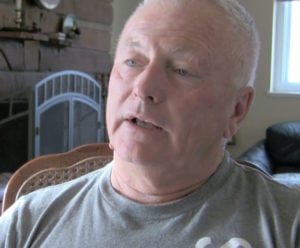 In the aftermath of the horrific murders at Sandy Hook Elementary School—while various federal and state legislators have proposed numerous bills restricting the sale and possession of guns, magazines, and ammunition—many Americans have wondered about or discussed the propriety of self-defense and of gun ownership.
In the aftermath of the horrific murders at Sandy Hook Elementary School—while various federal and state legislators have proposed numerous bills restricting the sale and possession of guns, magazines, and ammunition—many Americans have wondered about or discussed the propriety of self-defense and of gun ownership.
My father, Linn Armstrong, is an expert instructor in firearms and self-defense. He is certified by the National Rifle Association as a senior training counselor in firearms instruction, allowing him to certify other gun instructors. He cofounded the Grand Valley Training Club in Grand Junction, Colorado, which has provided firearms training to thousands of people.
Linn has also assisted Alon Stivi of Direct Measures International, a security consulting firm, in training school administrators, teachers, hospital administrators, and law enforcement personnel in effective responses to “active shooters” in a public place. Here, Linn discusses his views on guns and self-defense. (The views he expresses here are his own, not those of any other organization.) —Ari Armstrong
Ari Armstrong: Bystanders, including those without any weapons, have stopped the perpetrator during several mass murders, including the 2011 murders in Arizona. What are the most important things people need to know if, heaven forbid, they find themselves confronted by a mass murderer in a crowded place?
Linn Armstrong: One needs to understand how people think. Good guys and bad guys all think the same way—in a linear fashion. In taking action, people have to observe what’s around them, orient themselves relative to the things and people around them, decide what action to take, and then follow through with the action. This has been part of law enforcement and military training since World War II.
It’s impossible, if an adversary has the drop on me, for me to beat him to the draw so long as he is in the stage of decision while I’m still in the stage of observation. Therefore, I have to put him back into the position or thinking process of observation. I can do that, for example, by blinding him with light, cutting the lights, blinding his vision by throwing something at him, or changing my position. I’m always trying to keep myself in the stage of decision, while he’s always in the stage of observation. I call this the “chess game of life.”
In the case of the Aurora theater murders, if the first two rows of people had thrown their purses, soda pops, cell phones, shoes, and so on, at the perpetrator, that would have tended to restrict his vision and put him back in the stage of observation. This gives others a better opportunity to attack the adversary and take him down.
AA: In reading about mass murders, I am struck by the accounts of people cowering in fear rather than attacking the perpetrator. Often bystanders fail to act, even when they are to the back of the perpetrator. Certainly this fear is understandable. But how do people move past that fear and take positive action?
LA: Part of this is training. Training will change your attitude and give you confidence that you can control some aspect of your life even in these horrible situations. That attitude change is this: You refuse to be victimized by this person. You may die fighting, but at least you’ll die fighting for your life and the survival of your loved ones, rather than waiting to be executed.
We have gotten into this position of passivity in our society, where often we’d rather crawl under a desk and wait to die rather than attack the perpetrator. Nobody’s training, even mentally, to defend himself.
Somewhere our society forgot that it is right to protect ourselves from violence. Too often we read about the victim of a bully who is thrown out of school because he stood up and refused to be a victim. We should not tolerate those who initiate violence against others.
With just a little bit of training, so that they feel competent, in many circumstances bystanders can take down the perpetrator.
We don’t have to go out and look for such situations, but when we have an opportunity to do something like stop a mass murderer, I think there’s a moral dimension to doing so. But people need to gain the knowledge, skills, and attitude enabling them to do that.
AA: In 2011, more than twice as many people were killed in automobile crashes as were killed in homicides. Despite the relatively low risk of criminal attack, you have a permit to carry a concealed handgun. Why is that important to you?
LA: I am an avid supporter of wearing seatbelts (although I don’t believe they should be government mandated). I don't put on my seatbelt only when I think I may have an accident or after the crash. I feel the same way about a handgun. How could I explain to those I love deeply that I could have prevented their daughters or grandchildren from being murdered or assaulted but I just didn't feel like taking the effort to carry?
AA: Do you think it would improve the safety of school children for school administrators, teachers, and perhaps other responsible adults to carry concealed handguns in schools?
LA: I see no problem with this idea, but training and especially training that teaches firearm use in tight confines with lots of people would be helpful.
 AA: In recent weeks, gun sales have shot through the roof. If someone new to guns is considering becoming a gun owner, what are the main things that person needs to consider in buying a gun and acquiring the necessary training to use it safely and appropriately?
AA: In recent weeks, gun sales have shot through the roof. If someone new to guns is considering becoming a gun owner, what are the main things that person needs to consider in buying a gun and acquiring the necessary training to use it safely and appropriately?
LA: In buying a gun, my number one consideration, after reliability, is fit. You would not buy shoes too big or too small, or a bicycle too tall or too short. One must purchase a firearm that fits his or her hand. Watch what gun store owners say, as some of them may try to sell you the special on hand. Although the quality of training varies from class to class, all NRA classes at least have good, standardized content, and they teach about different types of guns.
You should be able to reach all of the gun’s controls without shifting your hand around. Many semiautomatics are too large to fit the hands of many women. Therefore, sometimes I recommend a revolver, even though other things equal I prefer a semiautomatic. (A semiautomatic can carry more rounds, and often they are better for “point” or “instinctive” shooting, as used by Israelis for many years, often suitable to emergency situations.)
NRA classes are designed to teach the knowledge, skills, and attitudes for safe gun handling. The NRA has been doing this training for a long time and is good at it.
I would make sure an instructor is NRA certified and also a good teacher. Look for thorough classes with plenty of time on the range. Some classes deal only with shooting paper targets, whereas the classes we developed in Grand Junction focus on self-defense, especially inside the home.
Then go to the range and practice your skills.
AA: Do you have any closing thoughts?
LA: In reading about the history of Russia and Germany, I’ve asked myself how people in a society allow their family members and neighbors to be taken away, shot, or sent to a gulag without taking a stand and stopping such things from occurring.
Self-defense training gives people the ability, mentally and physically, to confront evil.
Like this post? Join our mailing list to receive our weekly digest. And for in-depth commentary from an Objectivist perspective, subscribe to our quarterly journal, The Objective Standard.
Related:
- Thoughts on the Aurora Murders and Armed Citizens
- “No Substitute for Victory”: The Defeat of Islamic Totalitarianism
Image of Linn Armstrong: Ari Armstrong


![[TEST] The Objective Standard](https://test.theobjectivestandard.com/wp-content/uploads/2017/10/logo.png)









